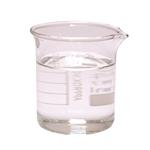Chemical Properties
CLEAR COLOURLESS LIQUID
Uses
4-Chloro-1-butanol was employed as an internal standard in the analysis of genotoxic impurities in active pharmaceutical ingredients by GC-MS technique.
Uses
Tetramethylene chlorohydrin is used inorganic synthesis.
Uses
4-Chloro-1-butanol is employed as an internal standard in the analysis of genotoxic impurities in active pharmaceutical ingredients by GC-MS technique.
Definition
ChEBI: A primary alcohol that is butan-1-ol substituted by a chloro group at position 4.
General Description
4-Chloro-1-butanol, an alkylating agent, is one of the genotoxic impurity in active pharmaceutical ingredients. Reaction of 4-chloro-1-butanol and Reichardt′s dye has been monitored spectrophotometrically for the determination of genotoxic impurities in pharmaceuticals.
Health Hazard
The toxicity of this compound is low. How ever, the acute toxic symptoms are those ofethylene and propylene chlorohydrins. Oralintake of this compound caused muscle con traction, gastrointestinal pain, ulceration, andliver injury in test animals.
LD50 value, oral (mice): 990 mg/kg
Tetramethylene chlorohydrin caused tumorsin lungs in test animals. Its carcinogenicity,however, is not yet fully established.
Fire Hazard
Flammable; flash point 36°C (97°F); vapor
density 3.7 (air = 1); the vapor forms an
explosive mixture with air, range is not
reported. Fire-extinguishing agent: “alcohol”
foam; a water spray may be used to cool fire-exposed containers and to flush any spill. It
decomposes to HCl and tetrahydrofuran on
heating.
Safety Profile
Moderately toxic by
ingestion. Questionable carcinogen with
experimental neoplastigenic data. Mutation
data reported. When heated to
decomposition it emits toxic fumes of Cl-.
See also CHLORIDES and ALCOHOLS.
Waste Disposal
Tetramethylene chlorohydrin is burned ina chemical incinerator equipped with anafterburner and scrubber.







